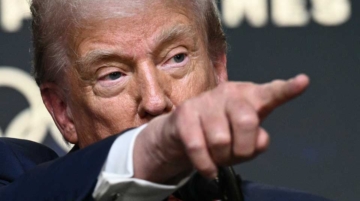
When the United States slaps a 32% tariff on a wide range of Indonesian exports, it frames the move as a way to protect American industry. But halfway around the world, the decision opens the door to deeper strategic realignment. With access to U.S. markets suddenly in question, Indonesia finds itself nudged ever closer to its largest trading partner—China.
This isn’t necessarily a negative development. China has played a vital role in Indonesia’s economic growth over the past decade, particularly in infrastructure, manufacturing, and mineral processing. Chinese investment has helped fill financing gaps and supported Indonesia’s downstream industrial ambitions, especially in the nickel sector.
Yet, as Indonesia moves closer to China in the wake of U.S. protectionism, the stakes are higher than ever. With the U.S. market becoming more restrictive, China is emerging as an even more essential partner in trade and investment. How this deeper engagement unfolds will depend not on Beijing’s intentions alone, but on Jakarta’s ability to manage the relationship in ways that align with its long-term development goals.
The new U.S. tariffs target a broad array of Indonesian exports—from textiles to electronics and automotive components. Though key minerals like nickel and bauxite are exempt, the broader signal is troubling: access to the U.S. market can no longer be taken for granted. As a result, Indonesia is expected to lean more heavily on its largest and more accessible economic partner—China.
That partner, too, is adapting to a changing trade environment. In response to U.S. tariffs, Beijing has announced its own 34% levy on American imports and tightened export controls on key raw materials. While these countermeasures primarily target U.S. economic interests, they may unintentionally accelerate Southeast Asia’s role in China’s trade recalibration. Indonesia, with its abundant natural resources and growing industrial base, could benefit as Chinese importers look to replace American goods.
Indonesian exporters, particularly in agriculture, food processing, and basic manufacturing, are well-positioned to fill the void. Palm oil, processed cocoa, seafood, and consumer products may see increased Chinese demand. This shift could also deepen Indonesia’s role in Chinese-centered supply chains, especially as the two countries continue to collaborate on industrial and infrastructure projects.
But deeper economic integration with China also brings complexity. Beijing remains a crucial engine for regional growth, but its economy is slowing, with domestic consumption under pressure and local governments grappling with debt and real estate woes. If China’s demand contracts, Indonesia could face downstream shocks. Overdependence on a single partner—however friendly—exposes vulnerabilities that Indonesia has worked hard to avoid.
Moreover, while Chinese investments have helped modernize Indonesia’s economy, their implementation has not been without friction. Labor conflicts, environmental degradation, and community disputes have emerged in areas hosting Chinese-financed projects. These are not uniquely Chinese problems—they reflect broader governance challenges in investment oversight and environmental protection.
Here lies the most important point: the responsibility to ensure positive outcomes does not lie with China alone, but with Indonesia itself. Foreign investors—whether from Beijing, Washington, or elsewhere—operate within the parameters set by host governments. Clear regulations, strong oversight, and transparent enforcement are essential if Indonesia is to ensure that foreign capital serves national development.
Jakarta, then, holds the keys. Rather than accepting deeper economic ties with China as a foregone conclusion, the Indonesian government can shape how those ties evolve. It can set clear expectations on technology transfer, labor standards, and environmental safeguards. In doing so, it can turn engagement with China into a partnership rooted in shared growth and local benefit—not dependency.
This moment also underscores the importance of diversification. While China is an indispensable partner, Indonesia should not retreat into a binary U.S.-China framework. Expanding trade with ASEAN, BRICS, and the Middle East can insulate the economy from external shocks. Revisiting dormant initiatives—like the Critical Minerals Agreement (CMA) proposed by the U.S.—offers another path to broaden Indonesia’s footprint in global supply chains without over-reliance on any single market.
Ultimately, this is not just about navigating U.S. tariffs or maximizing Chinese investment. It’s about Indonesia asserting its own agency in an increasingly multipolar world. The country has the diplomatic tools, institutional memory, and geopolitical leverage to chart a course that avoids entanglement in great power rivalry while advancing its national interests.
A closer economic relationship with China can be a source of resilience and growth, particularly as global trade becomes more fragmented. But this relationship must be guided by strategic clarity from Jakarta—not shaped passively by geopolitical pressures.
The path ahead will be defined not by the intentions of others, but by the decisions Indonesia makes today.
This article was co-authored by Yeta Purnama, a researcher at the Center of Economic and Law Studies (CELIOS), and Muhammad Zulfikar Rakhmat, Director of the China-Indonesia Desk at CELIOS.







